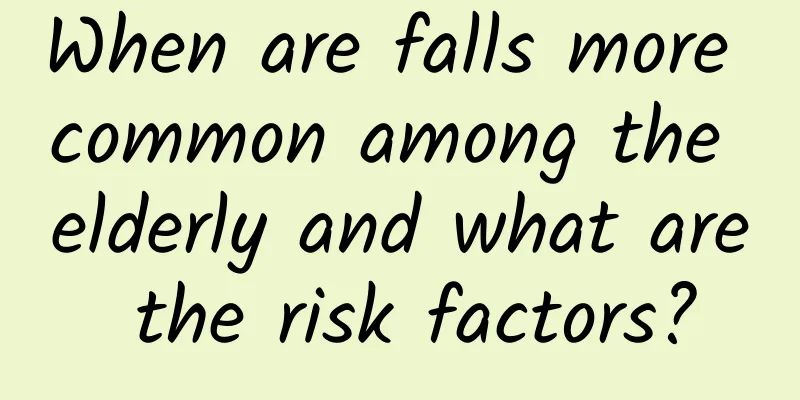When are falls more common among the elderly and what are the risk factors?

|
Falls are sudden, involuntary, unintentional changes in body position to the ground or a lower surface and are the second leading cause of death from accidental or unintentional injuries. Everyone can be injured in a fall. However, the type and severity of injuries vary depending on a person's age, gender, and health status. Adults over 60 years old account for the largest proportion of fatal falls. The incidence of falls among the elderly is high. The "China Injury Prevention Report" shows that the incidence of falls among the elderly has reached 20.7%. Falls among the elderly have serious consequences. In addition to causing death, they also bring negative effects such as fractures, trauma, and fear of falling, affecting the elderly's physical and mental health and independent living ability, reducing their quality of life, and increasing the burden on families and society. It is one of the important causes of disability and death among the elderly. Many people think that as people age, their legs and feet become less flexible and falls are inevitable. But the fact is that falls in the elderly are not accidents, but are caused by potential risk factors. Therefore, falls in the elderly can be prevented and controlled! part1 What are the risk factors for falls in the elderly? There are many factors that lead to falls in the elderly, mainly environmental factors and individual factors. Environmental factors include slippery floors, dim light, and clutter on the floor; individual factors include physiological changes, illness, medication, and psychological factors. Age is one of the main risk factors for falls. From a physiological function perspective, the stability and balance of the elderly's gait will decline with age. At the same time, the degeneration of the central nervous system and skeletal muscle system, as well as many acute and chronic diseases and psychological factors, will cause leg and foot problems in the elderly and increase the risk of falls. part2 Where do falls often occur among the elderly? The places where the elderly fall are not always on rugged roads. More than 50% of the elderly fall in their homes, which we think are safe. The problem of elderly people falling out of bed has also become a key issue in hospital care. part3 When is the peak time for falls among the elderly? The time when the elderly people fall is not in the evening or late at night, but more often in the morning. |
<<: Digua Games: Top 20 popular Android models in August 2011
>>: Canaccord Genuity: iPhone 4 remains the best-selling smartphone in the US
Recommend
Stop saying it’s okay to be a little fat when you are a kid. Childhood obesity is likely to continue into adulthood!
Review expert: Shen Yingjian, Director of the Nut...
Worst outcome of uterine leiomyoma
There are many diseases related to the uterus, am...
Are you fainted by the smell in the toilet? Experts: In this case, it is toxic and "ammonia" cannot be ignored!
You must have smelled this "toxic" gas....
What medicine should I take to treat scanty menstruation?
If the menstrual flow is small, it is actually a ...
Pain around belly button at 30 weeks of pregnancy
Girls may experience various uncomfortable sympto...
What should you pay attention to during menstruation?
During menstruation, many women will experience p...
Can I do moxibustion during menstruation?
Moxibustion is a very traditional treatment metho...
Besides corns, the hard bumps on your feet could also be this, and it's contagious!
In our busy lives, our feet carry us around every...
What fruit is good to eat when you have stomach discomfort? These 7 are enough
With the increasing incidence of stomach diseases...
When is the best time to eat apples for weight loss? Time schedule for eating apples to lose weight
Many female friends who want to lose weight often...
How much does it cost to check if the fallopian tubes are blocked?
There are many reasons for female infertility, in...
How to increase height for girls
The age when women grow taller is before the age ...
My period came and then disappeared. What's going on?
Girls suffer from irregular menstruation due to t...
I took ceftriaxone during ovulation and got pregnant
It is best for women to prepare for pregnancy bef...
Urinary tract infection Vulvar itching
Urinary tract infection is a relatively common di...









